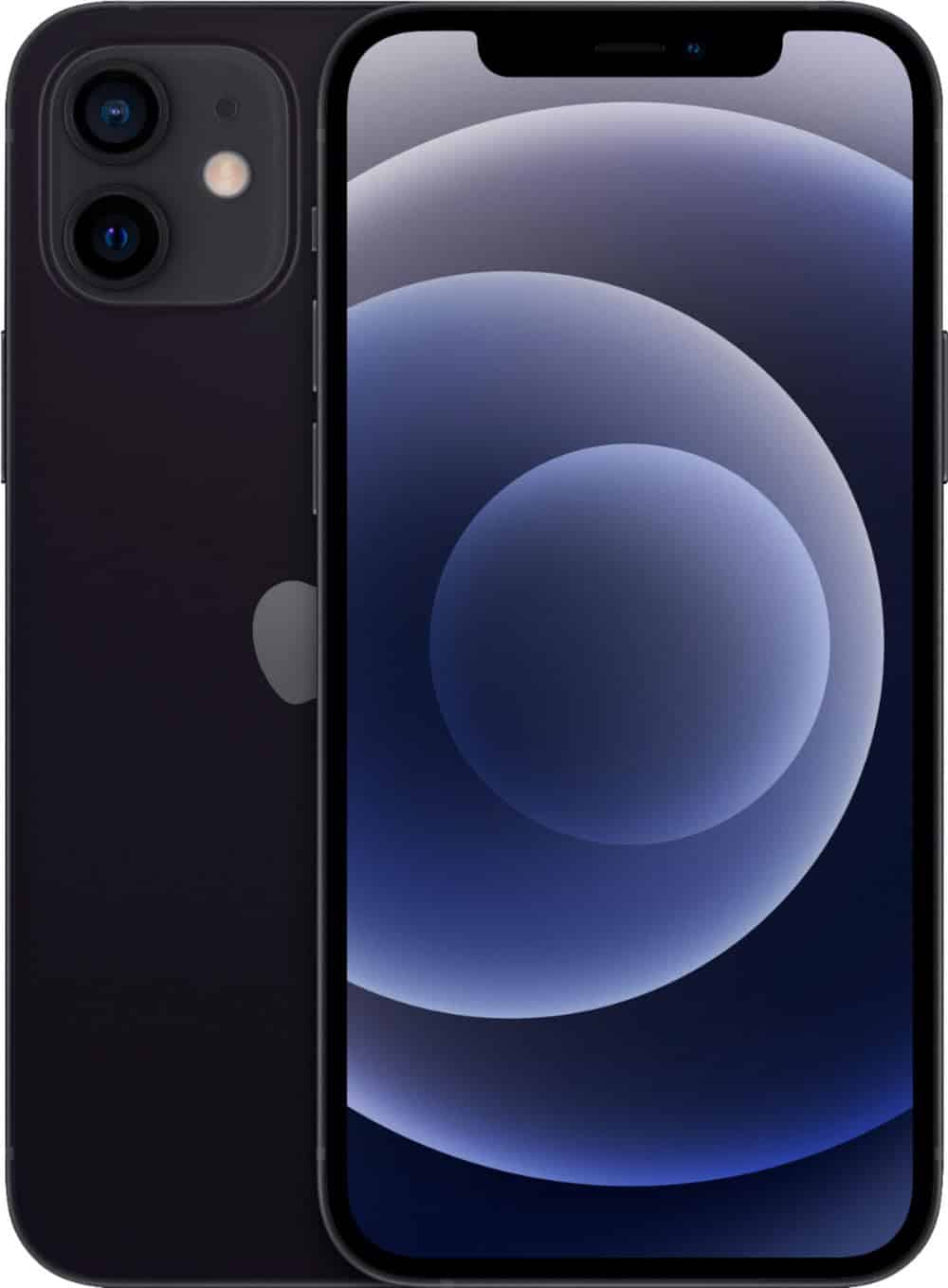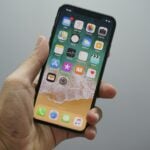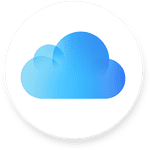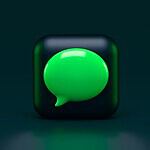The iPhone 12 brought exciting upgrades to Apple’s smartphone lineup in 2020. It features a sleek design with flat edges and a 6.1-inch Super Retina XDR display. The iPhone 12 packs the powerful A14 Bionic chip, 5G connectivity, and MagSafe technology for improved wireless charging and accessories.
This model introduced several key improvements over its predecessor. The Ceramic Shield front cover offers better drop protection. Its dual 12MP camera system with Night mode on all cameras enhances low-light photography. The iPhone 12 also supports Dolby Vision HDR video recording up to 30 fps.
Running iOS 14 at launch, the iPhone 12 provided access to widgets, App Library, and other new features. It came in five colors: blue, green, black, white, and (PRODUCT)RED. Storage options ranged from 64GB to 256GB to suit different needs and budgets.
| Feature | Specification |
|---|---|
| Display | 6.1″ Super Retina XDR |
| Chip | A14 Bionic |
| Camera | Dual 12MP system |
| 5G | Yes |
| iOS | 14 (at launch) |
iPhone 12 Specifications
Key Features and Overview
The iPhone 12 was a significant release for Apple, introducing a new design, 5G connectivity, and improved cameras. It came in several colors and storage options.
Display
- Size: 6.1-inch Super Retina XDR display
- Resolution: 2532 x 1170 pixels at 460 ppi
- Technology: OLED
- Features: HDR display, True Tone, Wide color (P3), Haptic Touch, 2,000,000:1 contrast ratio (typical), 625 nits max brightness (typical); 1200 nits max brightness (HDR)
Processor
- Chip: A14 Bionic chip
- Neural Engine: 16-core Neural Engine
Camera
- Rear Cameras: Dual-camera system
- 12MP Wide: ƒ/1.6 aperture
- 12MP Ultra Wide: ƒ/2.4 aperture and 120° field of view
- Features: Night mode, Deep Fusion, Smart HDR 3, Portrait mode with advanced bokeh and Depth Control, Portrait Lighting with six effects, Optical image stabilization (Wide), 2x optical zoom out, Digital zoom up to 5x
- Video Recording: 4K video recording at 24 fps, 25 fps, 30 fps, or 60 fps; 1080p HD video recording at 25 fps, 30 fps, or 60 fps; 720p HD video recording at 30 fps; HDR video recording with Dolby Vision up to 30 fps; Slow-motion video support for 1080p at 120 fps or 240 fps; Time-lapse video with stabilization; Night mode Time-lapse; Extended dynamic range for video up to 60 fps; Cinematic video stabilization (4K, 1080p, and 720p)
- Front Camera (TrueDepth): 12MP camera, ƒ/2.2 aperture, Portrait mode with advanced bokeh and Depth Control, Portrait Lighting with six effects, Night mode, Deep Fusion, Smart HDR 3, 4K video recording at 24 fps, 25 fps, 30 fps, or 60 fps, 1080p HD video recording at 25 fps, 30 fps, or 60 fps, Slow-motion video support for 1080p at 120 fps
Battery
- Video playback: Up to 17 hours
- Audio playback: Up to 65 hours
- Fast charge capable: Up to 50% charge in around 30 minutes with 20W adapter or higher (sold separately)
- Wireless charging: MagSafe and Qi wireless charging
Storage
- 64GB
- 128GB
- 256GB
Cellular and Wireless
- 5G (sub-6 GHz and mmWave)
- Gigabit LTE
- Wi-Fi 6 (802.11ax) with 2×2 MIMO
- Bluetooth 5.0
Other Features
- Face ID: For secure authentication and Apple Pay
- Water and dust resistance: IP68 (maximum depth of 6 meters up to 30 minutes)
- Operating System: Initially iOS 14
Physical Characteristics
- Height: 5.78 inches (146.7 mm)
- Width: 2.82 inches (71.5 mm)
- Depth: 0.29 inch (7.4 mm)
- Weight: 5.78 ounces (164 grams)
Available Colors
- Black
- White
- Red
- Green
- Blue
Comparing the iPhone 12 to Other Models
The iPhone 12 was released alongside the iPhone 12 mini, iPhone 12 Pro, and iPhone 12 Pro Max. The iPhone 12 mini offered the same features in a smaller form factor. The Pro models offered additional features like a telephoto lens, a LiDAR scanner, and more RAM.
The iPhone 12 was a significant upgrade over the iPhone 11, with a better display, a faster processor, and 5G connectivity. It also introduced MagSafe charging.
When choosing between different iPhone models, consider factors like screen size, camera capabilities, and budget. The iPhone 12 provides a good balance of features and price. The iPhone 13 introduced some improvements like a brighter display, a smaller notch and camera improvements. The iPhone 14 then brought further refinements, including better low-light photography. The iPhone 15 moved to USB-C and brought a new main camera. Each model has its own strengths and weaknesses. The best choice depends on your individual needs.
Design and Build
The iPhone 12 features a sleek design with durable materials and vibrant color options. Its construction balances aesthetics and functionality while offering improved protection against everyday wear and tear.
Materials and Durability
The iPhone 12 boasts a Ceramic Shield front cover, which Apple claims is tougher than any smartphone glass. This innovative material offers enhanced drop protection, reducing the risk of screen damage. The device’s frame is made of aerospace-grade aluminum, providing strength without excess weight.
IP68 water and dust resistance adds another layer of durability. You can submerge your iPhone 12 in up to 6 meters of water for 30 minutes without worry. The flat-edge design also improves grip, making accidental drops less likely.
Colors and Appearance
The iPhone 12 comes in five appealing colors:
| Color | Finish |
|---|---|
| Blue | Matte |
| Black | Matte |
| White | Matte |
| Green | Matte |
| Purple | Matte |
Each color option features a matte finish that resists fingerprints and smudges. The flat edges give the device a modern look while paying homage to earlier iPhone designs.
The rear glass panel complements the front display, creating a symmetrical appearance. Apple’s logo is centered on the back, adding a touch of brand recognition without being overly prominent.
Display Technology
The iPhone 12 features a high-quality Super Retina XDR OLED display. This advanced screen technology offers vivid colors and deep blacks for an immersive viewing experience.
Screen Features
The 6.1-inch display on the iPhone 12 boasts a resolution of 2532 x 1170 pixels at 460 ppi. This ensures sharp text and crisp images. The screen supports HDR and Dolby Vision, enhancing contrast and color range for compatible content.
You’ll appreciate the True Tone feature, which adjusts white balance based on ambient light. This reduces eye strain and provides a more natural viewing experience. The display also offers a wide color gamut (P3), reproducing more shades for lifelike visuals.
The iPhone 12’s screen is protected by Ceramic Shield, a tough glass-ceramic material. This improves durability and resistance to drops. The display has rounded corners that follow the phone’s curved design.
| Feature | Specification |
|---|---|
| Type | Super Retina XDR OLED |
| Size | 6.1 inches |
| Resolution | 2532 x 1170 pixels |
| PPI | 460 |
| HDR | Yes |
| Dolby Vision | Yes |
| True Tone | Yes |
| Protection | Ceramic Shield |
The screen’s brightness reaches 625 nits typically and up to 1200 nits for HDR content. This ensures good visibility even in bright outdoor conditions.
Performance and Hardware
The iPhone 12 packs powerful internals and storage options to meet diverse user needs. Its advanced processor and flexible storage choices ensure smooth performance for various tasks.
Processor
The iPhone 12 features Apple’s A14 Bionic chip, a cutting-edge processor that delivers exceptional speed and efficiency. This 5-nanometer chip contains a 6-core CPU and 4-core GPU, providing up to 50% faster performance than other smartphone chips.
The A14 Bionic enables improved machine learning capabilities, enhancing tasks like photo processing and augmented reality experiences. Its 16-core Neural Engine can perform up to 11 trillion operations per second, significantly boosting AI-driven features.
For everyday use, you’ll notice faster app launches, smoother multitasking, and improved energy efficiency. The A14 Bionic also supports 5G connectivity, allowing for faster download and upload speeds when connected to compatible networks.
Storage Options
The iPhone 12 offers three storage capacities to suit different needs and budgets:
| Storage Capacity | Use Case |
|---|---|
| 64GB | Light users, cloud storage reliance |
| 128GB | Average users, local media storage |
| 256GB | Heavy users, large media libraries |
The 64GB option is suitable if you primarily use cloud services and don’t store many photos or videos locally. It’s the most affordable choice but may require careful storage management.
The 128GB variant offers a good balance between price and capacity. It provides ample space for apps, photos, and videos without frequent storage concerns.
For power users or those with extensive media libraries, the 256GB option ensures you won’t run out of space. This capacity is ideal if you frequently record 4K videos or download large files.
Choose your storage wisely, as the iPhone 12 doesn’t support expandable storage via microSD cards. Consider your usage patterns and future needs when selecting a capacity.
Connectivity and Network
The iPhone 12 offers advanced connectivity options with support for 5G networks and multiple wireless technologies. It also provides flexible SIM support for global usage.
Wireless Technologies
The iPhone 12 supports 5G connectivity for ultra-fast data speeds. You can enjoy faster downloads, smoother streaming, and improved online gaming.
The device is compatible with both sub-6GHz and mmWave 5G networks. Sub-6GHz offers wider coverage while mmWave provides extremely high speeds in limited areas.
For areas without 5G coverage, the iPhone 12 supports 4G LTE networks. It’s also backward compatible with 3G and 2G technologies for global connectivity.
Bluetooth 5.0 enables wireless connections to headphones, speakers, and other accessories. The improved range and speed enhance your experience with wireless peripherals.
MagSafe technology allows for efficient wireless charging and easy attachment of compatible accessories.
SIM Support
The iPhone 12 offers dual SIM functionality through a combination of a physical nano-SIM and an eSIM. This setup allows you to use two different phone numbers on one device.
The eSIM feature lets you activate a cellular plan without a physical SIM card. It’s particularly useful for travelers who can switch between local carriers easily.
For users in China, a special dual nano-SIM model is available. This version uses two physical SIM cards instead of the eSIM option.
| SIM Type | Global Model | China Model |
|---|---|---|
| Physical | 1 nano-SIM | 2 nano-SIMs |
| eSIM | Supported | Not available |
You can store multiple eSIM profiles on your iPhone 12. This feature lets you switch between different carriers or plans without changing physical SIM cards.
Frequently Asked Questions
The iPhone 12 offers advanced features in camera technology, display quality, and durability. Users often inquire about its capabilities and how it compares to other models.
What are the camera capabilities of the iPhone 12?
The iPhone 12 boasts impressive camera features. It includes a dual-camera system with 12MP Ultra Wide and Wide lenses.
The device supports Night mode and Deep Fusion for enhanced low-light photography. You can also record 4K HDR video with Dolby Vision.
How does the iPhone 12’s battery life compare to previous models?
Apple claims the iPhone 12 offers comparable battery life to its predecessors. You can expect up to 17 hours of video playback on a single charge.
The device supports fast charging and wireless charging options. This gives you flexibility in how you power your device throughout the day.
What display technology is used in the iPhone 12?
The iPhone 12 features a Super Retina XDR OLED display. This technology provides vibrant colors and deep blacks for an immersive viewing experience.
The screen measures 6.1 inches diagonally. It offers a resolution of 2532 x 1170 pixels at 460 ppi.
Can the storage capacity of the iPhone 12 be expanded?
The iPhone 12 does not support expandable storage. You’ll need to choose the right capacity when you purchase the device.
Apple offers three storage options for the iPhone 12: 64GB, 128GB, and 256GB. Consider your needs carefully when selecting a model.
What are the differences between the iPhone 12 and iPhone 12 Pro?
The main differences lie in the camera system and pricing. The iPhone 12 Pro offers an additional telephoto lens and LiDAR scanner.
The Pro model also starts with higher base storage at 128GB. It has a stainless steel frame compared to the aluminum frame on the standard iPhone 12.
How does the iPhone 12 perform with regards to water and dust resistance?
The iPhone 12 has an IP68 rating for water and dust resistance. This means it can withstand submersion in water up to 6 meters deep for 30 minutes.
While this provides good protection against accidental spills or rain, you should avoid intentionally submerging your device in water.
| Feature | iPhone 12 | iPhone 12 Pro |
|---|---|---|
| Camera System | Dual-lens | Triple-lens + LiDAR |
| Base Storage | 64GB | 128GB |
| Frame Material | Aluminum | Stainless Steel |
| Starting Price | $799 | $999 |







